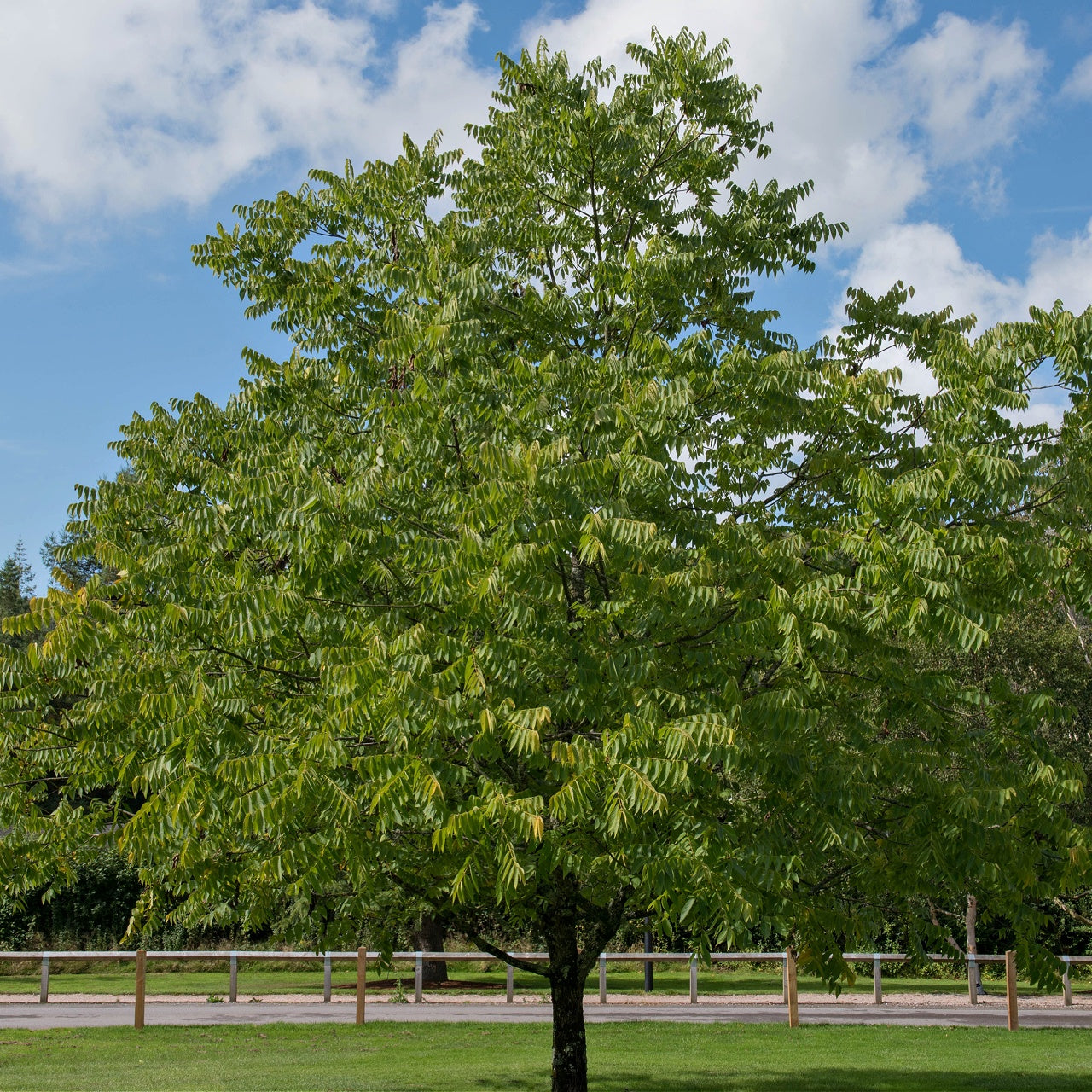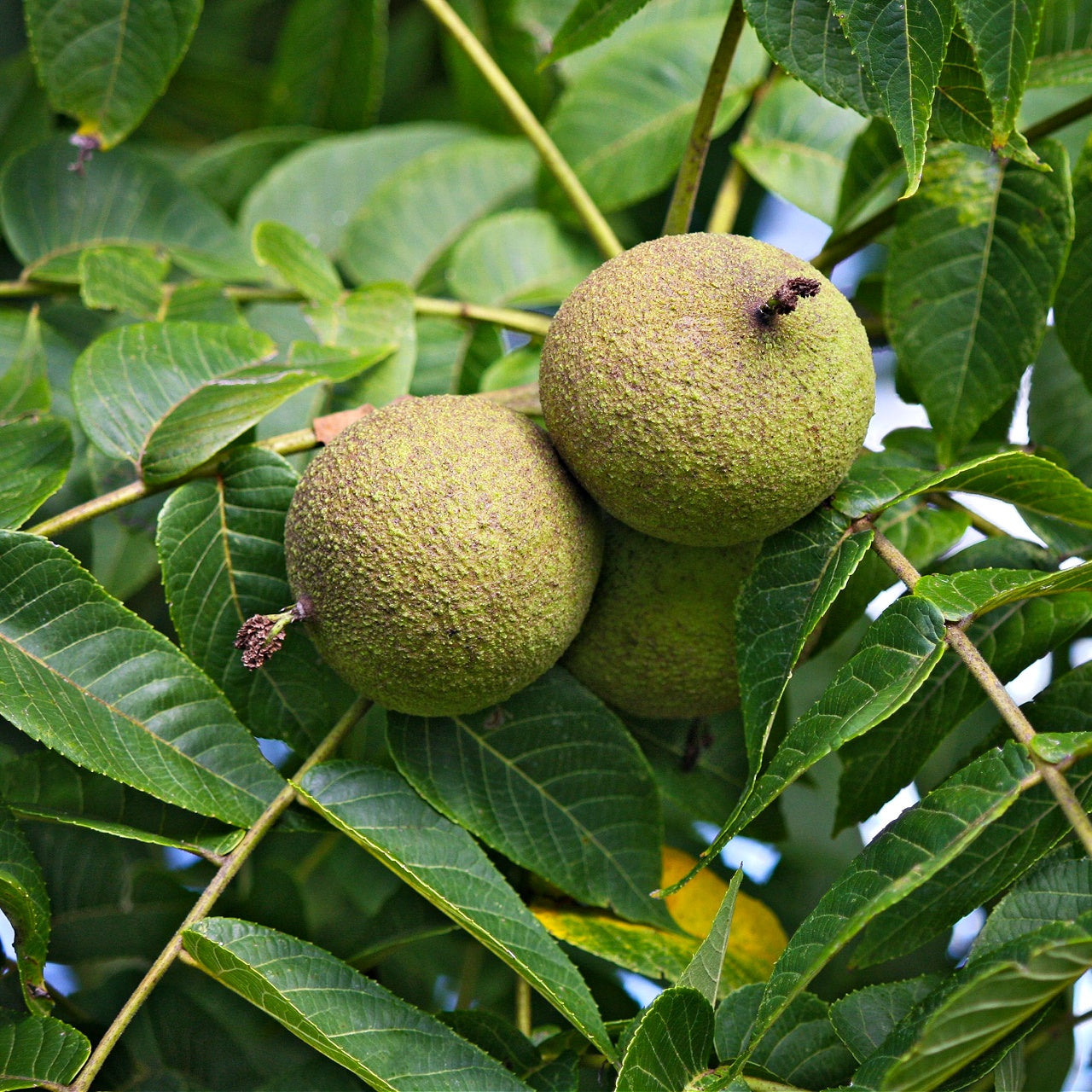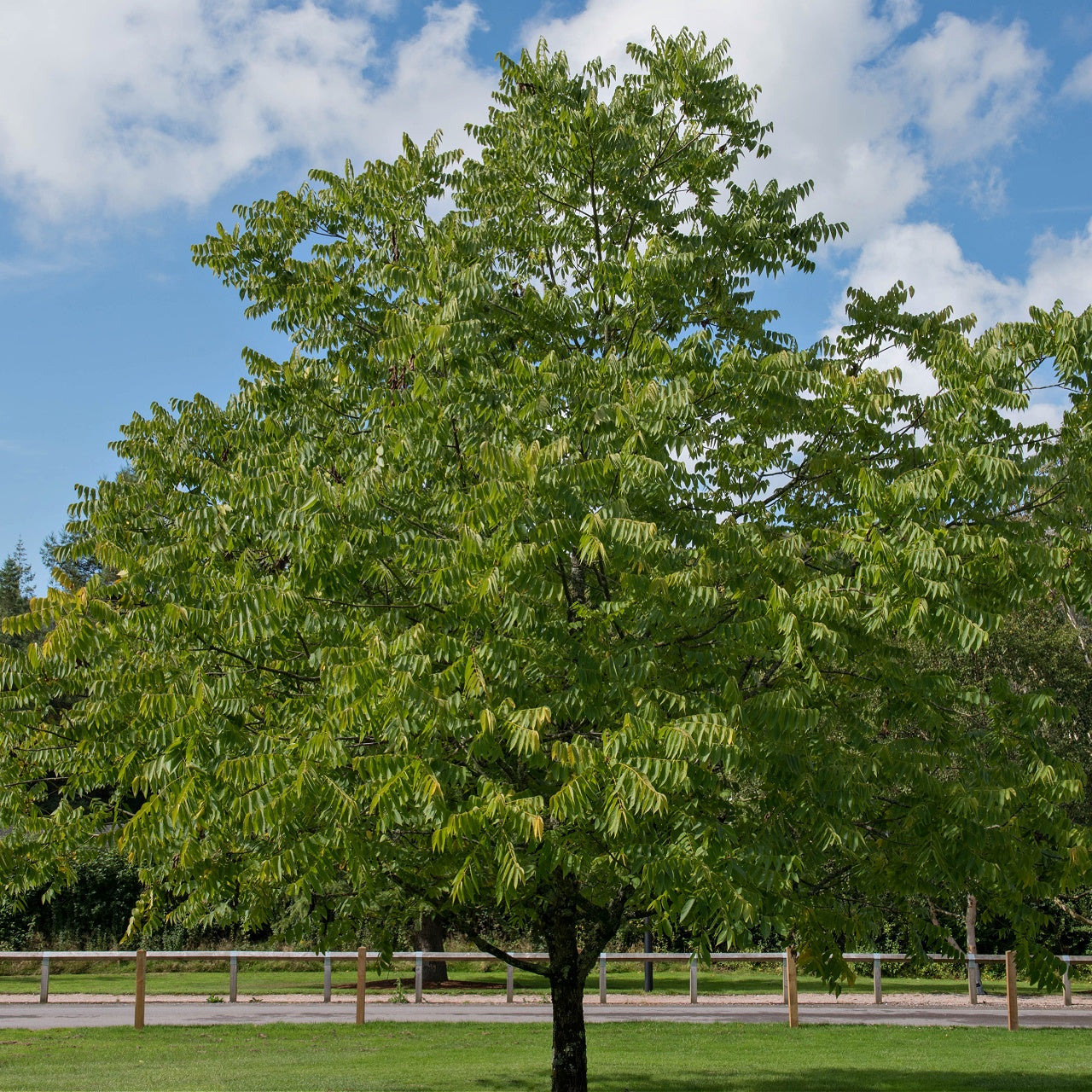Black Walnut Trees
Black Walnut Trees
This plant ships:
Ships November–April within 10 business days after the order is placed.Couldn't load pickup availability
Exposure
Full SunHeight at Maturity
Over 25 FeetUsage
FruitingShipped As
bare-rootShips
Ships November–April within 10 business days after the order is placed.Planting Zones
4-9Black Walnut Trees
Black walnut trees are large types with dark bark and grow in many parts of the United States. They are sometimes planted for shade in urban areas.
Its scientific name for it is Juglans nigra, which means "juglans" is a type of nut, and "nigra" means black.
Where Black Walnut Trees Are Found In The Wild
They are native to eastern North America from southern Canada to northern Florida, west to Nebraska and Kansas, and south to Louisiana and Texas. They can be found growing in upland forests or along streams and rivers.
Its other names include:
- Juglans nigra
- Black hickory
These Trees Are Strong And Hardy
They are beautiful, strong, and magnificent. These trees are also very hardy and grow in various soil types as long as they are well-drained.
This Tree Has Male And Female Blooms
They are dioecious plants, meaning they have separate male and female ones. In late spring, the male produces pollen, fertilizing the female flowers on the same or nearby ones. The female flowers produce nuts that eventually fall to the ground, where they germinate into seedlings.
When These Trees Should Be Pruned
Black walnut trees should be pruned only when necessary because they tend to increase once established. Before pruning it, it is essential to understand how this plant grows so you don't accidentally cut off its water supply or damage its roots by cutting too low on its trunk or branches.
Share






